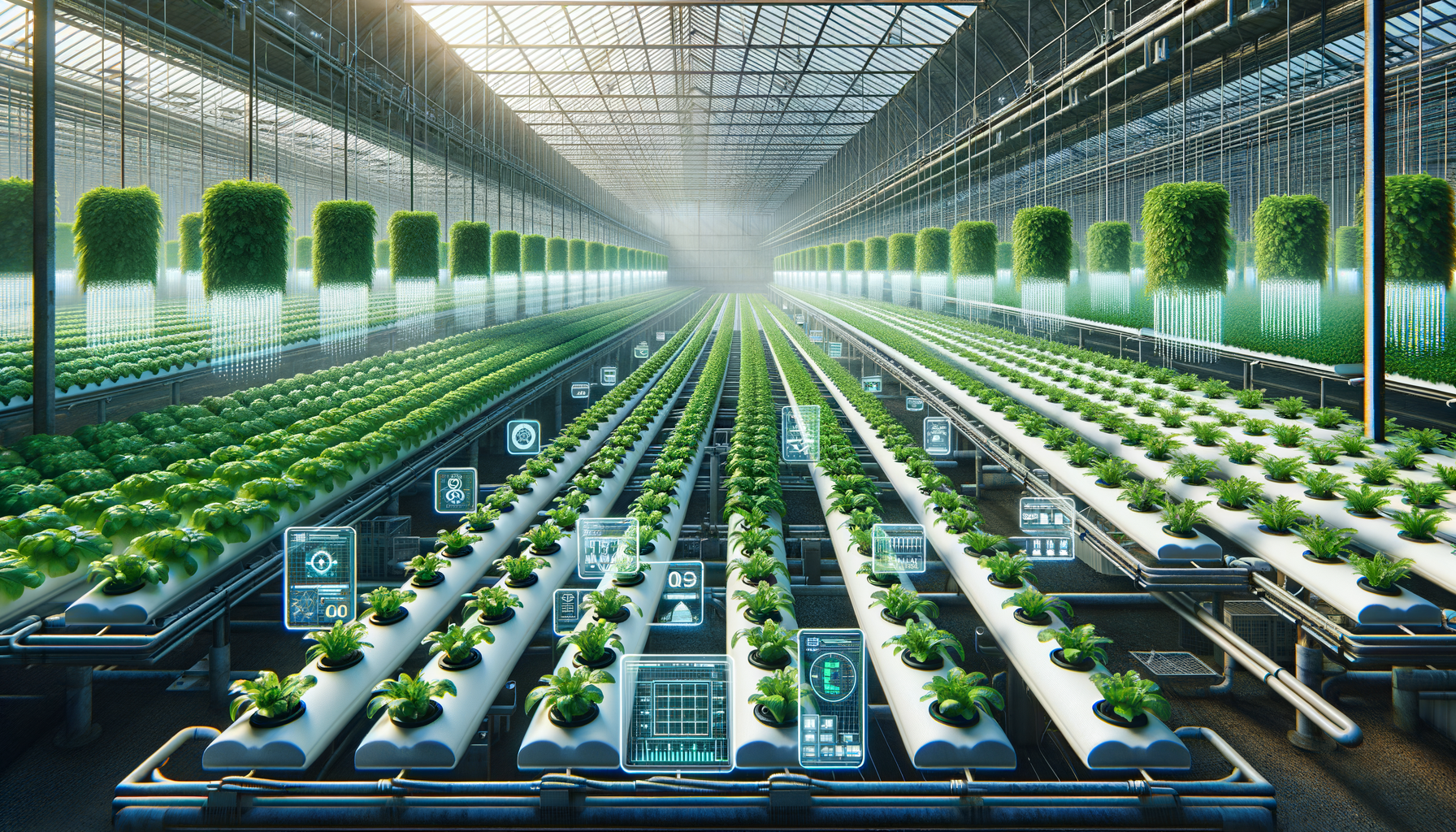Understanding Hydroponic Farming
Hydroponic farming is a method of growing plants without soil, using mineral nutrient solutions in an aqueous solvent. This innovative approach to agriculture allows for the cultivation of crops in environments where traditional farming is not feasible. The technique is gaining traction worldwide due to its efficient use of resources and ability to produce high yields. In hydroponics, plants are anchored in a growing medium and fed with nutrient-rich water, which provides them with all the essential elements needed for growth.
The importance of hydroponic farming lies in its potential to address some of the pressing challenges faced by traditional agriculture, such as limited arable land, water scarcity, and the need for sustainable food production systems. By eliminating the need for soil, hydroponic systems can be set up in urban areas, deserts, and even indoors, making it possible to produce fresh food closer to where it is consumed.
Hydroponic farming offers numerous advantages, including:
- Water Efficiency: Uses up to 90% less water compared to traditional farming.
- Space Utilization: Can be implemented in areas with limited space, including urban rooftops and vertical gardens.
- Controlled Environment: Allows for year-round production with minimal impact from external weather conditions.
As the global population continues to grow, hydroponic farming presents a viable solution for meeting the increasing demand for food while minimizing environmental impact.
Different Types of Hydroponic Systems
Hydroponic systems come in various forms, each with unique features and benefits. Understanding these systems is crucial for selecting the right setup for specific crops and environments. Here are some of the most common types:
Nutrient Film Technique (NFT): This system involves a thin film of nutrient solution that continuously flows over the roots of the plants. It is ideal for lightweight, fast-growing plants such as lettuce and herbs. NFT systems are known for their efficiency and low water usage.
Deep Water Culture (DWC): In this system, plant roots are submerged in a nutrient-rich solution. An air pump provides oxygen to the roots, promoting healthy growth. DWC is simple to set up and maintain, making it popular among beginners.
Drip System: This versatile system delivers nutrient solution directly to the base of each plant through a network of tubes and emitters. It can be used for a wide range of crops, from leafy greens to fruit-bearing plants. Drip systems are highly customizable and can be scaled for large operations.
Aeroponics: In aeroponic systems, plant roots are suspended in air and misted with a nutrient solution. This method allows for maximum oxygenation, leading to rapid growth rates. Aeroponics is particularly effective for high-value crops and research applications.
Each hydroponic system has its own set of requirements and benefits. Choosing the right system depends on factors such as available space, crop type, and budget. Regardless of the choice, hydroponic systems offer a sustainable and efficient way to grow food.
Advantages of Hydroponic Farming
Hydroponic farming offers several advantages over traditional soil-based agriculture, making it an attractive option for modern food production. One of the primary benefits is resource efficiency. Hydroponic systems use significantly less water than conventional farming, as the nutrient solution is recirculated and reused. This makes hydroponics especially suitable for regions with limited water resources.
Another advantage is the ability to grow crops in non-arable areas. Since hydroponic systems do not rely on soil, they can be set up in diverse locations, including urban environments, deserts, and even outer space. This flexibility allows for local food production, reducing the need for long-distance transportation and its associated carbon footprint.
Hydroponic farming also enables precise control over growing conditions, such as nutrient levels, pH, and temperature. This control leads to consistent and high-quality yields, as plants receive optimal conditions for growth. Additionally, hydroponics reduces the risk of soil-borne diseases and pests, minimizing the need for chemical pesticides and herbicides.
Some key advantages of hydroponic farming include:
- Faster Growth: Plants generally grow faster in hydroponic systems due to the direct access to nutrients and oxygen.
- Higher Yields: Controlled environments and optimized conditions lead to increased productivity.
- Reduced Environmental Impact: Lower water usage, reduced chemical inputs, and decreased land degradation contribute to sustainability.
Overall, hydroponic farming offers a promising solution for sustainable agriculture, addressing some of the critical challenges faced by traditional farming methods.
Challenges and Considerations in Hydroponic Farming
Despite its many advantages, hydroponic farming is not without challenges. One of the primary considerations is the initial setup cost. Hydroponic systems can be expensive to establish, requiring investments in infrastructure, equipment, and technology. However, these costs can be offset by the increased yields and resource efficiency over time.
Another challenge is the need for technical knowledge and expertise. Hydroponic systems require careful monitoring and management to ensure optimal growing conditions. This includes maintaining the correct nutrient balance, pH levels, and environmental factors such as light and temperature. Growers must be well-versed in these aspects to avoid issues that could affect plant health and productivity.
Additionally, hydroponic systems are vulnerable to power outages and equipment failures. Since these systems rely on electricity to circulate water and nutrients, any disruption can have significant impacts on plant growth. Backup systems and regular maintenance are essential to mitigate these risks.
Some considerations for hydroponic farming include:
- Energy Consumption: Hydroponic systems can require significant energy inputs, particularly for lighting and climate control.
- Water Quality: The quality of water used in hydroponics is crucial, as contaminants can directly affect plant health.
- Market Access: Hydroponic produce may face competition from traditional farming, requiring effective marketing strategies to differentiate products.
Despite these challenges, hydroponic farming remains a viable and innovative approach to food production, offering solutions to many of the limitations of conventional agriculture.
Future Prospects of Hydroponic Farming
The future of hydroponic farming looks promising, with advancements in technology and growing interest in sustainable agriculture driving its development. As urbanization continues to rise, hydroponic systems offer a solution for local food production, reducing the reliance on imported produce and enhancing food security.
Technological innovations are expected to play a significant role in the evolution of hydroponic farming. Automation and data analytics can optimize growing conditions, reduce labor costs, and increase efficiency. For instance, sensors and IoT devices can monitor plant health and environmental factors in real-time, allowing for precise adjustments to nutrient delivery and climate control.
The integration of renewable energy sources, such as solar panels and wind turbines, can further enhance the sustainability of hydroponic systems. By reducing reliance on non-renewable energy, these systems can lower operational costs and minimize their environmental footprint.
Future prospects for hydroponic farming include:
- Increased Adoption: As awareness of hydroponics grows, more farmers and businesses are likely to adopt this method.
- Research and Development: Continued R&D efforts can lead to new innovations and improvements in hydroponic technology.
- Policy Support: Government policies and incentives can encourage the adoption of hydroponic systems and support sustainable agriculture initiatives.
In conclusion, hydroponic farming holds significant potential for transforming food production systems, making them more efficient, sustainable, and adaptable to changing global needs.




Leave a Reply